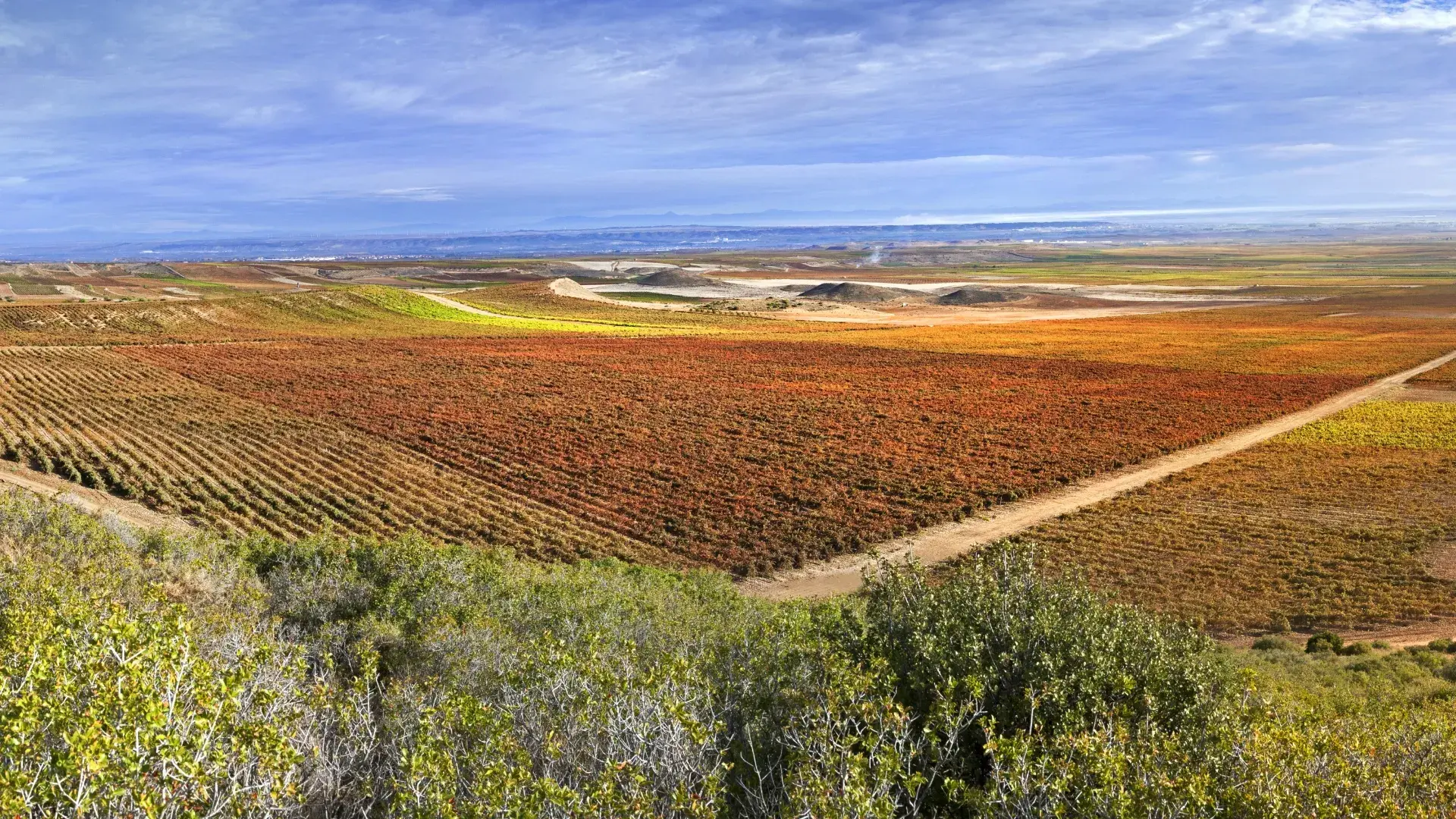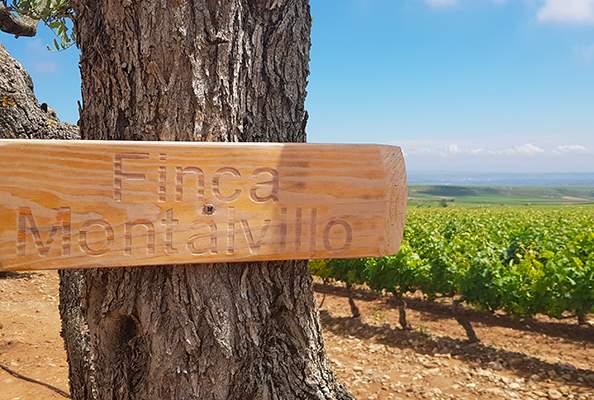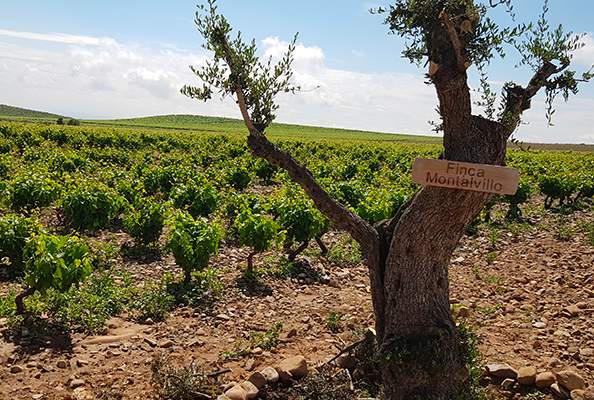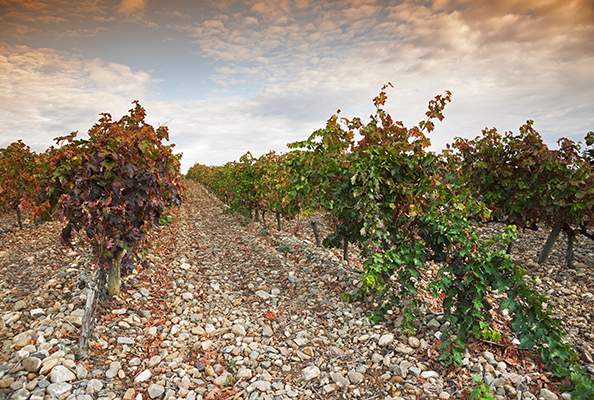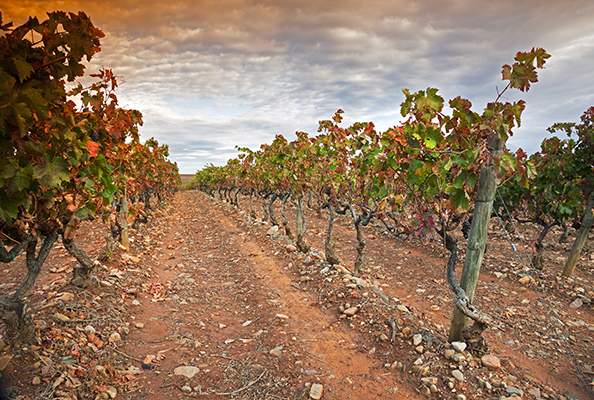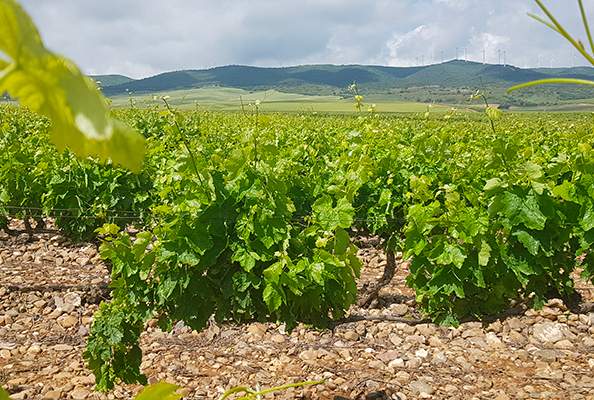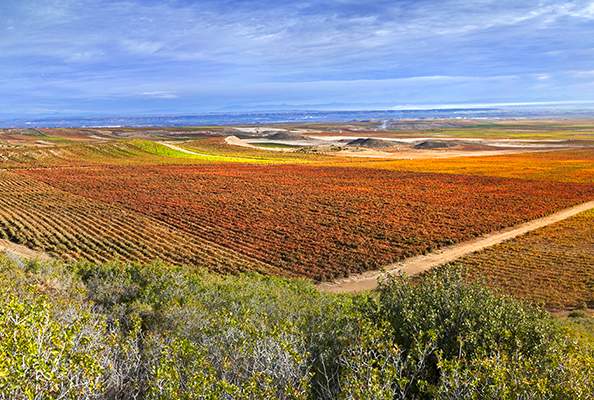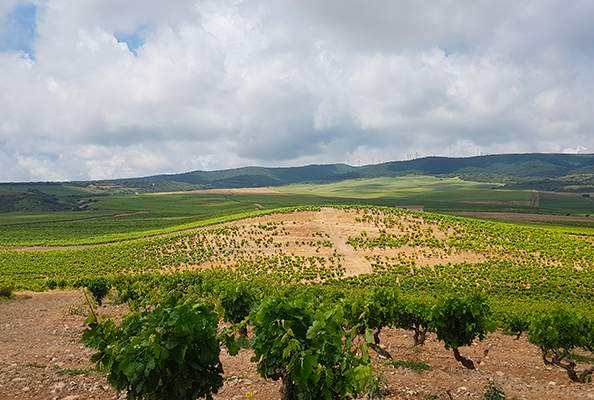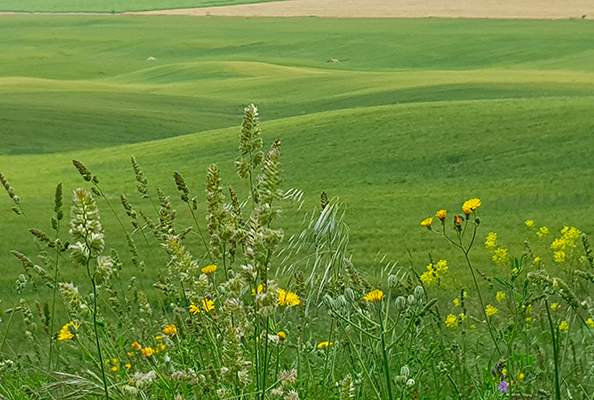Position
Location
Vineyard
Climate
Soil
Vegetation
Entre el valle fértil del Ebro y la majestuosidad de la Sierra de Yerga.
Finca Montalvillo is in a unique setting marked by two large natural phenomena. The fertile plains of the wide Ebro valley spread out in front, while the Sierra de Yerga rises up behind with its eroded profile and covered with dense forests. That privileged location, continuously caressed by the wind, defines the unique character of the estate and its connection with the landscape that surrounds it.
- Altitude: from 430 to 700 metres above sea level
- 225 hectares of vineyards
- 100 hectares of grains
- 4 hectares of almonds
- 9 hectares of olive trees
- 60 hectares of forest, thicket, trails, and buildings
Tierras altas al este de Rioja
Finca Montalvillo is located on the slopes of the Sierra de Yerga, in the foothills of the Iberian System.
Yerga marks the eastern edge of the La Rioja autonomous community and, consequently, the Rioja denomination of origin.
Finca Montalvillo tiene 225 hectáreas de viña (en ladera), el 40% en cultivo ecológico
Despite looking homogeneous from a distance, the property is defined by its diversity of soils, hills, shallows, and varieties.
Sierra de Yerga highland; Plantation from 400 m to 620 m
The hills have diverse orientations that provide different phases of ripening. They are mostly oriented north-east and north-west.
The first plantations on the estate are from 1974, around 70 ha.
El efecto monte
Finca Montalvillo is in the inland Mediterranean domain, with dry summers and rainy autumns and springs.
The nearness of the mountains, added to the effect of the altitude and slope create significant nuances. It rains more and the summer nights are a bit cooler than in the valley.
Una gran variedad
Even though they generally have a loamy texture with a lot of pebbles, there are all kinds of soil types:
Rich and poor, with gravel and free of stones, deep and shallow, chalky and washed, with strong or weak microbiological activity, etc.
So much land has a lot going on, and it needs a rigorous classification by zones.
La linde agreste
The lower areas of Finca Montalvillo have a boundary with the arid steppe of the Ebro valley.
The vegetation there is dominated by (drought resistant) xerophyle Mediterranean scrub.
If you climb up to the opposite end the contrast is stark. The dense forest of oak and pine, a refuge for more humid vegetation, starts at more than 700 metres.
Position
Finca Montalvillo is in a unique setting marked by two large natural phenomena. The fertile plains of the wide Ebro valley spread out in front, while the Sierra de Yerga rises up behind with its eroded profile and covered with dense forests. That privileged location, continuously caressed by the wind, defines the unique character of the estate and its connection with the landscape that surrounds it.
- Altitude: from 430 to 700 metres above sea level
- 225 hectares of vineyards
- 100 hectares of grains
- 4 hectares of almonds
- 9 hectares of olive trees
- 60 hectares of forest, thicket, trails, and buildings
Location
Finca Montalvillo is located on the slopes of the Sierra de Yerga, in the foothills of the Iberian System.
Yerga marks the eastern edge of the La Rioja autonomous community and, consequently, the Rioja denomination of origin.
Vineyard
Despite looking homogeneous from a distance, the property is defined by its diversity of soils, hills, shallows, and varieties.
Sierra de Yerga highland; Plantation from 400 m to 620 m
The hills have diverse orientations that provide different phases of ripening. They are mostly oriented north-east and north-west.
The first plantations on the estate are from 1974, around 70 ha.
Climate
Finca Montalvillo is in the inland Mediterranean domain, with dry summers and rainy autumns and springs.
The nearness of the mountains, added to the effect of the altitude and slope create significant nuances. It rains more and the summer nights are a bit cooler than in the valley.
Soil
Even though they generally have a loamy texture with a lot of pebbles, there are all kinds of soil types:
Rich and poor, with gravel and free of stones, deep and shallow, chalky and washed, with strong or weak microbiological activity, etc.
So much land has a lot going on, and it needs a rigorous classification by zones.
Vegetation
The lower areas of Finca Montalvillo have a boundary with the arid steppe of the Ebro valley.
The vegetation there is dominated by (drought resistant) xerophyle Mediterranean scrub.
If you climb up to the opposite end the contrast is stark. The dense forest of oak and pine, a refuge for more humid vegetation, starts at more than 700 metres.
There are 11 different varieties with a focus on the biodiversity of the vineyard.
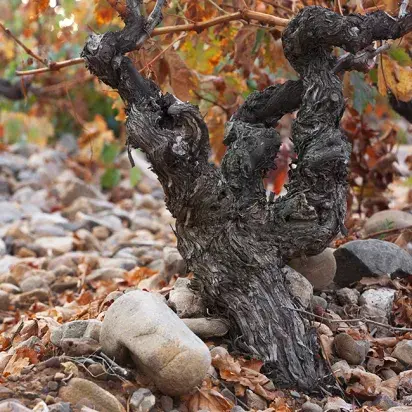
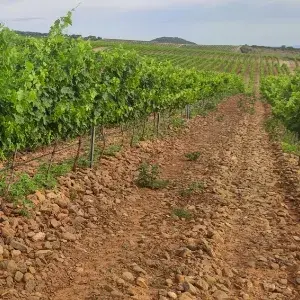
Red varieties in La Rioja
Garnacha tinta
Freshness and versatility to produce fruity and balanced wines.
Graciano
Intense aromas, deep colour and high acidity provide structure and longevity to the wines.
Mazuelo
Higher acidity and stable colour contribute to the complexity and ability to age of the wines.
Maturana tinta
Produces wines with a distinctive character and notable intensity.
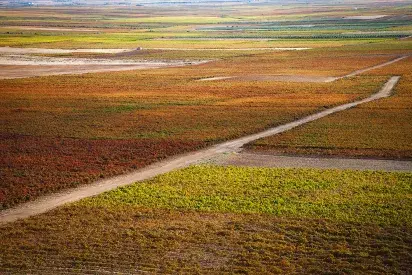
White varieties in La Rioja
Viura
Freshness and aroma for both young wines and ones to be aged.
Malvasía
Its distinct aromatic profile gives floral and fruity notes to white wines.
Garnacha Blanca
Versatility, balance, and a pleasant acidity.
Tempranillo blanco
A natural mutation of the Tempranillo Tinto produces wines with notable freshness and a unique aromatic profile.
Maturana blanca
Intensity and vibrant freshness.
Chardonnay
Even though it’s an international variety, it’s adapted to the conditions of the eastern Rioja and produces high-quality wines that have ageing potential.
Verdejo
In the eastern Rioja it produces fresh and aromatic wines and enriches the diversity of the white wines from the area.
The soil of Finca Montalvillo is so variable and complex that we can split it into six different zones according to the diversity of the substrates and disparities in the vigour and potential of the vineyards.
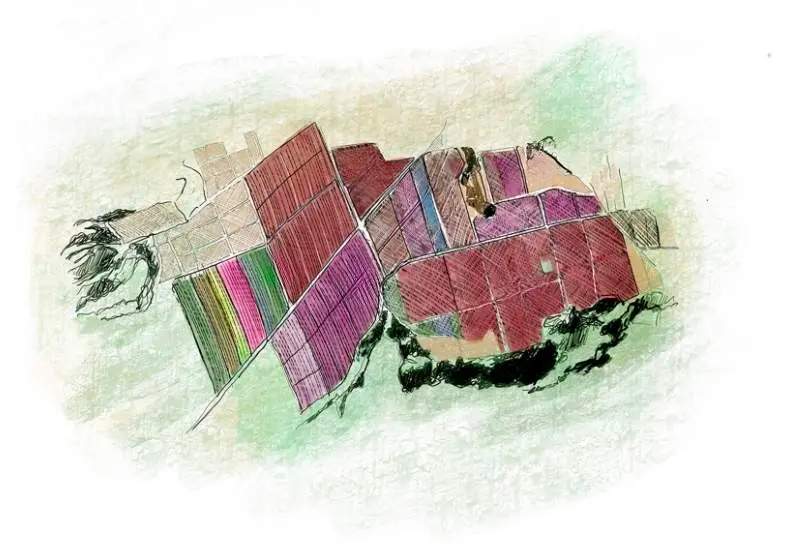
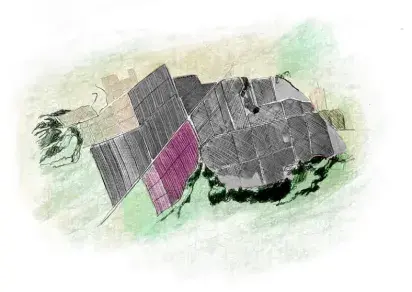
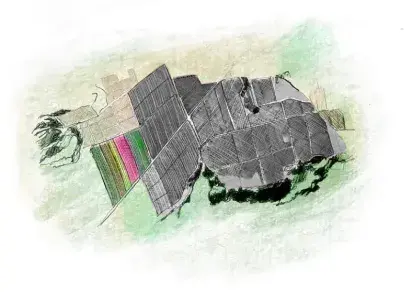
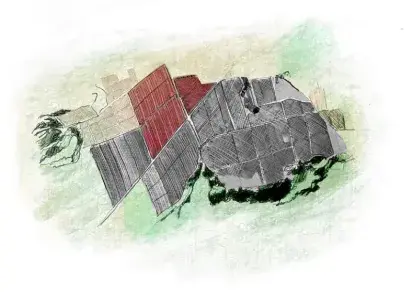
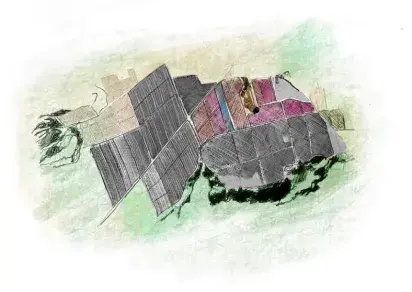
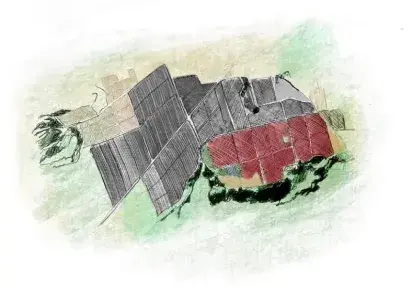
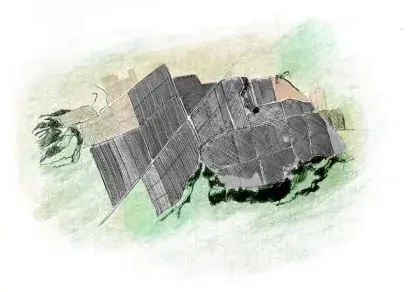
Zone 1
The Most Special and Interesting
Under the surface layer of very soft organic material there is a very marked horizon of lime. It’s a vineyard with a vigorous and balanced content that provides nuances of complexity to the grape and the wine. It has very good water retention that is perfect for non-irrigated vineyards.
Varieties: Mazuelo (36 ha) / Garnacha (12 ha)
Zone 2
High and Steep
It’s a highly complex zone. It has deep soil that is rich in organic material and has some gravel. There are abrupt changes in slope.
It’s a vigorous and well-nourished vineyard highly suitable for producing white grapes.
Varieties: Garnacha blanca, Maturana blanca, Maturana tinta, Tempranillo blanco, Malvasía and Chardonnay
Zone 3
Flat and Rocky
These are very similar zones that are fresh, not very deep (1 to 1.5 metres), rich in organic material, and have some nutritional deficiencies. Flat morphology and a high amount of gravel. Exceptional drainage capacity, high availability of water for the vines. A vigorous and productive vineyard
Varieties: ecological Tempranillo, Tempranillo, Tempranillo blanco, Viura, Verdejo and Garnacha
Zone 4
Demanding Soil, Exceptional Grapes
It’s similar to zones 3 and 5, but it has steep internal slopes. The soil is poor and shallow. In this zone with steep slopes the poor, the shallow soil leads to vineyards with contained vigour and limited production. However, the demanding natural conditions turn out to have an invaluable reward, a superior quality grape.
The uniqueness of the land and its challenging environment lets us grow vines that express the best of themselves and result in wines with a unique character, complexity, and essence.
Varieties: Mazuelo, Tempranillo and Viura
Zone 5
Flat and Rocky
These are very similar zones that are fresh, not very deep (1 to 1.5 metres), rich in organic material, and have some nutritional deficiencies. Flat morphology and a high amount of gravel. Exceptional drainage capacity, high availability of water for the vines. It’s a vigorous and productive vineyard.
Varieties: ecological Tempranillo, Tempranillo, Tempranillo blanco, Viura, Verdejo and Garnacha
Zone 6
The Ecological Jewel of the Estate
This zone has five hectares of vineyards with ecological production that stand out for their uniqueness and transformative challenge. Located in an environment with austere soil that has its own personality —rich in chalk and with marked salinity— this land challenges us to get the best from it. Its uniqueness inspires us to use regenerative, careful, and sustainable winegrowing practices, which makes it a living laboratory for agricultural innovation.
Thanks to expert handling and controlled irrigation, we’ve managed to make this vineyard be a true expression of ecological winegrowing.
Varieties: ecological Tempranillo, ecological Garnacha
